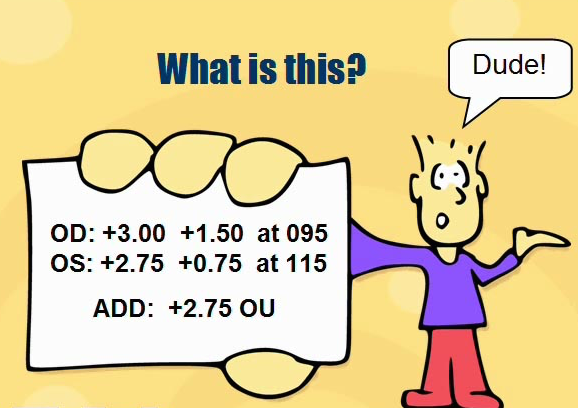
Sphere (Sph)
Sph means Sphere and indicates the basic degree of short or long-sightedness. Minus (-) means you are short sighted and plus (+) means longsighted. There will also be a number associated with this, which could be small or large.
The higher the number the stronger the strength of prescription lens required. This could have an impact on the frames you choose as the higher the prescription the bigger the curve of the actual lens.
Cylinder (Cyl)
Cyl stands for Cylinder. This is your level of astigmatism (visual distortion), which is the amount of ‘extra’ prescription you have. Astigmatism is caused by an irregularly shaped cornea and can lead to blurred or distorted vision.
If this box on your prescription is empty it means you have no astigmatism and your eyes are perfectly round. If there is a low number it means your eyes are slightly out of shape whereas a high number indicates that your eyes are very oval in shape and therefore more affected by astigmatism.
Axis
Axis shows the Cylinder described above by measuring the astigmatism in degrees. This is used by your opticians when angling your lenses.
Prism
Prism is sometimes prescribed when eyes need help working together. If you are having glasses for near vision or to help prevent headaches, prism may be included in your prescription.
ADD
ADD denotes the ‘extra’ power you need for close work (Near ADD) or arm’s length (Inter ADD). If numbers are shown in this section it means you have different prescriptions for distance or reading, this may then mean you need bifocal or varifocal lenses.
Sphere and cylinder power is always measured in dioptres. These come in decimal form and are commonly written in quarter-dioptre values. In contrast, the axis values are whole numbers from 1 to 180 and dictate a location.
It’s important to remember that a glasses prescription is not the same as a contact lens prescription so the two are not interchangeable.
